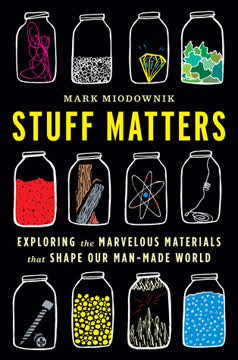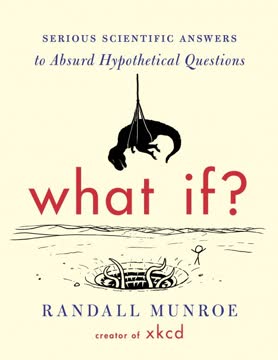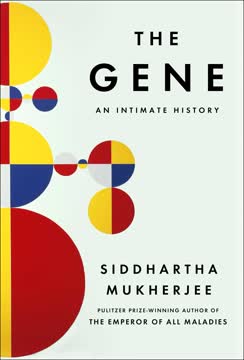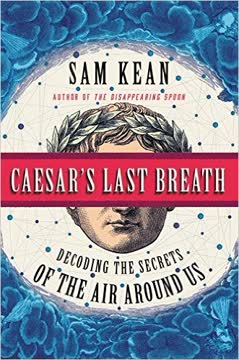Key Takeaways
1. The Periodic Table is More Than Just a Chart: It's a Storybook of History, Love, and Madness.
Between hydrogen at the top left and the man-made impossibilities lurking along the bottom, you can find bubbles, bombs, money, alchemy, petty politics, history, poison, crime, and love.
Beyond the classroom. The periodic table, often remembered as a daunting chart, is actually a rich tapestry woven with human stories and scientific discovery. It's not just a catalog of matter but a reflection of human history, ambition, and folly. From childhood fascination with mercury to complex scientific achievements, each element has a tale.
A human artifact. The table is an anthropological marvel, reflecting the artful and ugly aspects of human interaction with the physical world. It's a scientific accomplishment and a storybook, revealing layers of information about the universe and ourselves.
More than science. Studying the periodic table goes beyond chemistry textbooks. It touches upon:
- History and etymology
- Alchemy and mythology
- Literature and psychology
- Poison forensics and crime
2. An Element's Place on the Table Dictates Its Personality and Behavior.
For each element, its geography is its destiny.
Location matters. The periodic table's structure, with its columns and rows, is not arbitrary. An element's position determines its fundamental properties and how it interacts with others. This organization is one of humankind's great intellectual achievements.
Electron configurations. The arrangement of electrons, particularly in the outermost shells, drives an element's chemical behavior.
- Noble gases (column 18) are inert due to full electron shells.
- Halogens (column 17) and alkali metals (column 1) are highly reactive, seeking to gain or lose electrons to achieve stability.
- Transition metals (columns 3-12) have more complex electron arrangements, leading to varied properties.
Predicting interactions. The table's layout allows scientists to predict how elements will combine. Elements in columns that easily donate electrons tend to bond with those that easily accept them, forming stable compounds like table salt (sodium chloride).
3. Elements Have Surprising Genealogies and Family Quirks.
In genealogy, parents at the top of a family tree produce children who resemble them, and in just the same way, carbon has more in common with the element below it, silicon, than with its two horizontal neighbors, boron and nitrogen.
Column relationships. Elements in the same column share similar properties, like members of a family. This vertical relationship is often more significant than horizontal proximity on the table.
Carbon's versatility. Carbon (element 6) is the backbone of life due to its ability to form four bonds, creating complex chains and structures like proteins. Its need for four electrons makes it promiscuous in bonding.
- Amino acids link via carbon and nitrogen bonds.
- Long protein names reflect chains of amino acids.
Silicon's limitations. Silicon (element 14), carbon's cousin below it, shares some flexibility but cannot fully mimic carbon's role in life.
- Silicon dioxide (sand) is a solid, making gas exchange difficult for hypothetical silicon-based life.
- Silicon struggles to form the ring structures found in energy-storing sugars.
- Silicon cannot easily form the double bonds common in complex biochemicals.
4. The Universe's Elements Were Forged in Stars and Supernovae.
Without the nuclear furnaces described in B2FH to forge elements like carbon, oxygen, and nitrogen, and without supernova explosions to seed hospitable places like earth, life could never form.
Cosmic origins. Elements are not eternal; they are created. The universe began primarily with hydrogen and helium. Stars act as cosmic furnaces, fusing lighter elements into heavier ones.
Stellar nucleosynthesis. Inside stars:
- Hydrogen fuses into helium.
- As hydrogen depletes, helium fuses into elements up to magnesium.
- Larger stars fuse heavier elements up to iron.
Supernova explosions. Elements heavier than iron are primarily created during the cataclysmic death of massive stars. Supernovae provide the immense energy needed to fuse atoms onto iron nuclei, scattering these heavy elements across the cosmos. As Carl Sagan put it, "We are all star stuff."
5. Elements Play Crucial, Sometimes Dark, Roles in Human Conflict and Warfare.
The fighting there is proof that in addition to all the uplifting moments the periodic table has inspired, it can also play on humankind’s worst, most inhuman instincts.
Chemical warfare. Elements have been weaponized throughout history, from Spartan smoke attacks to modern chemical agents.
- Bromine and chlorine were used as devastating gases in World War I, championed by chemist Fritz Haber.
- Haber's work on nitrogen also enabled the creation of explosives and fertilizers, a contradictory legacy.
Metals in conflict. Elements like molybdenum and tungsten were vital for strengthening steel in weaponry during the World Wars.
- Molybdenum improved German Big Berthas in WWI, leading to conflict over its supply.
- Tungsten (wolfram) was crucial for Nazi Germany's war machine in WWII, fueling profitable trade with neutral countries like Portugal.
Modern resource wars. Elements continue to fund conflicts. Coltan (containing tantalum and niobium) fueled war in the Democratic Republic of Congo due to demand for cell phones, and tin has played a similar role.
6. The Periodic Table Reveals Both Life-Giving and Life-Taking Properties.
An element toxic in one circumstance can become a lifesaving drug in another, and elements that get metabolized in unexpected ways can provide new diagnostic tools in doctors’ clinics.
Dual nature. Many elements have a complex relationship with biology, acting as essential nutrients, potent poisons, or effective medicines depending on the dose and context.
Poisoner's corridor. Elements in the southeast corner of the table, like cadmium, thallium, lead, and polonium, are notorious poisons.
- Cadmium caused "ouch-ouch" disease in Japan by replacing essential minerals.
- Thallium is a deadly neurotoxin, mimicking potassium in the body.
- Polonium is a highly radioactive poison.
Elemental medicine. Other elements offer therapeutic benefits.
- Silver and copper have antiseptic properties.
- Gadolinium is used in MRI contrast agents and potentially for targeted cancer therapy due to its magnetic and neutron-absorbing properties.
- Bismuth, despite its neighbors, is benign and used in medicine like Pepto-Bismol.
7. Elements Can Deceive Our Senses and Even Our Minds.
We trust our senses for true information about the world and for protection from danger, and learning how gullible our senses really are is humbling and a little frightening.
Sensory illusions. Elements can trick our senses, highlighting the limitations of our biological detection systems.
- Tellurium smells like garlic.
- Beryllium tastes sweet like sugar, despite being a toxic metal.
- Our tongues confuse the taste of electricity (charged particles) with sourness and saltiness.
Nitrogen's stealth. Nitrogen gas can cause asphyxiation without triggering panic because our bodies primarily monitor carbon dioxide levels, not oxygen. This "killing with kindness" has led to accidental deaths.
Iodine and the mind. Iodine is crucial for thyroid function and cognitive development. A lack of iodine can cause goiter and mental retardation, demonstrating how fundamental mental faculties depend on specific elements. The historical struggle to iodize salt in India, despite its clear health benefits, shows how human beliefs and politics can override rational understanding of elemental needs.
8. The History of Elements is Intertwined with Politics and Power Struggles.
More than anything, politics proved the folly of scientists burying their heads in lab work and hoping the world around them figured out its problems as tidily as they did their equations.
Nationalism and naming. The discovery and naming of elements have often been tied to national pride and political causes.
- Marie Curie named polonium after her native, non-existent Poland.
- Hafnium was named after Copenhagen.
- German chemists named elements after regions and scientists, sometimes with nationalistic overtones.
Cold War rivalries. The race to discover and name superheavy elements became a proxy battleground during the Cold War between American and Soviet scientists, leading to decades of disputes over priority and nomenclature.
Persecution and refuge. Political regimes have persecuted scientists, forcing many to become refugees.
- Jewish scientists fled Nazi Germany, enriching science in other countries.
- Lise Meitner, a key figure in discovering nuclear fission, was denied credit and a Nobel Prize partly due to political circumstances and gender bias.
9. Elements Have Shaped Economies and Fueled Gold Rushes and Counterfeiting.
The history of many metallic elements cannot be told without getting tangled up in the history of money, which means the history of those elements is also tangled up with the history of counterfeiting.
Metals as currency. Elements like gold, silver, and platinum have been used as money for millennia due to their rarity and properties.
- Early coins were made of electrum (gold-silver alloy).
- King Croesus separated gold and silver to create standardized currency.
Deception and counterfeiting. The similar properties of metals have enabled counterfeiting.
- Brass (copper-zinc alloy) may have inspired the myth of King Midas's golden touch.
- Tellurium-gold minerals caused a "fool's fool's gold" rush in Australia.
- Counterfeiters have used cheaper metals like lead and copper to fake coins.
Modern elemental economics. Elements continue to be economically significant.
- Rhodium is one of the most valuable elements by weight.
- Aluminium, once more precious than gold, became cheap and ubiquitous after an efficient extraction method was discovered by Charles Hall.
- Europium is used in anti-counterfeiting ink on euro banknotes due to its fluorescent properties.
10. Elements Inspire Art, Literature, and Reveal the Madness of Genius.
The history of science is science itself.
Classical influence. The periodic table's nomenclature reflects the classical education of early scientists, with many names derived from Greek and Latin mythology and places.
Science in art. Elements and scientific concepts have appeared in literature and art, though sometimes inaccurately.
- Goethe incorporated chemical concepts and geological debates into his writing, though often siding with incorrect theories.
- Mark Twain used radium in his story "Sold to Satan," reflecting early fascination with radioactivity.
Design and aesthetics. Elements contribute to the beauty and function of designed objects.
- Calcium rocks like marble are used in sculpture and architecture.
- New alloys provide subtle advantages in design.
- Ruthenium was used for the durable tip of the iconic Parker 51 pen.
Madness and discovery. The line between genius and madness can be blurred, and psychological states can influence scientific pursuits.
- William Crookes, a brilliant chemist, pursued spiritualism, possibly influenced by grief or even elemental exposure, though his later work remained sound.
- Pathological science involves meticulous, scientifically-informed delusion, often seen in speculative fields or among those emotionally attached to a theory (e.g., megalodon hunters, cold fusion proponents).
- Robert Lowell's experience with lithium highlights the complex relationship between mental illness, elemental chemistry, and artistic output.
11. Extreme Conditions Reveal Elements' Hidden, Quantum Behaviors.
The point is that the universe can accommodate far more states of matter—different micro-arrangements of particles—than are dreamed of in our provincial categories of solid, liquid, and gas.
Beyond the basics. While we learn about solids, liquids, and gases, elements exhibit many other states of matter under extreme conditions.
Cold-induced changes. Extreme cold can dramatically alter elemental behavior.
- Tin undergoes "tin leprosy" at low temperatures, crumbling as its crystal structure shifts.
- Noble gases like argon, krypton, and xenon, normally inert, can form compounds at ultra-low temperatures.
Quantum states. At temperatures near absolute zero, elements enter quantum states where particles behave collectively.
- Superconductors allow electricity to flow without resistance as electrons pair up and move as a "flying wedge." John Bardeen was a key figure in this field.
- Bose-Einstein condensate (BEC) forms when atoms become so cold and compressed that they overlap and become indistinguishable, acting as one giant "superatom." This state was predicted by Einstein and Bose and created with rubidium atoms.
12. The Periodic Table Extends Beyond Known Elements and Holds Mysteries About the Universe.
Perhaps someday we’ll look back on it as we do early attempts to organize a periodic table.
Beyond the natural 92. Scientists have synthesized elements heavier than uranium, extending the periodic table into the realm of the superheavy.
- Technetium (43) was the first man-made element.
- Elements up to 118 have been created, often in fleeting quantities.
- The hunt for new elements became a Cold War competition.
The Island of Stability. Theoretical calculations suggest that certain superheavy elements, particularly around element 114, may be significantly more stable than their neighbors, forming an "island" in the sea of instability. This is a major goal for nuclear physicists.
Fundamental mysteries. The periodic table and the elements within it point to deep, unresolved questions about the universe.
- The fine structure constant (alpha) dictates how electrons bind to nuclei and influences nuclear fusion, yet its precise value is a mystery. Some evidence suggests it may not be constant across time or space.
- Fermi's paradox asks why, given the vastness of the universe, we haven't found alien life. The answer might lie in the specific conditions (like elemental abundances or constant values) required for life, making Earth potentially unique.
- Future discoveries may include new forms of matter like superatoms (jellium) and quantum dots, potentially leading to new periodic table arrangements.
Last updated:
Review Summary
The Disappearing Spoon is a popular science book about the periodic table, blending chemistry, history, and entertaining anecdotes. Readers generally found it engaging and informative, praising Kean's ability to make complex topics accessible. Many appreciated the humorous stories about scientists and element discoveries. Some critics felt the organization could be improved and that certain sections were challenging for non-scientists. Overall, most readers enjoyed the book's mix of science and storytelling, finding it a fun way to learn about chemistry.
Similar Books








Download PDF
Download EPUB
.epub digital book format is ideal for reading ebooks on phones, tablets, and e-readers.






